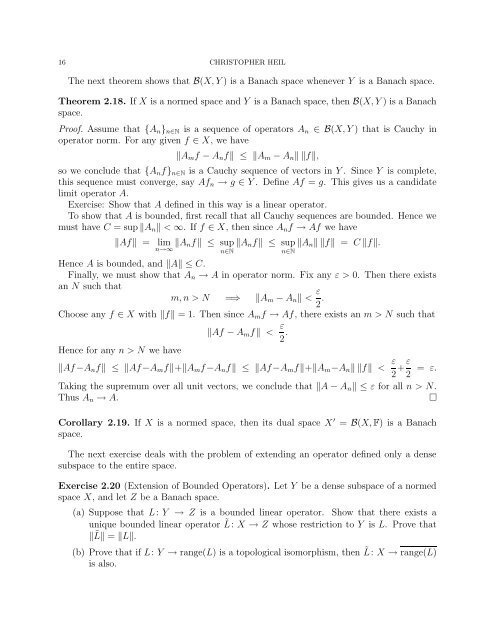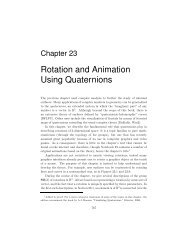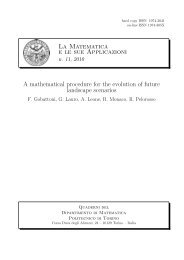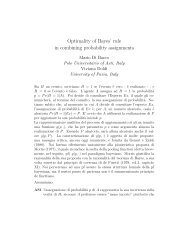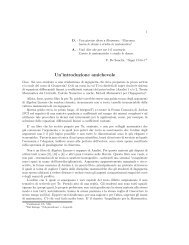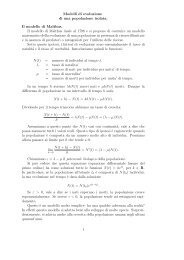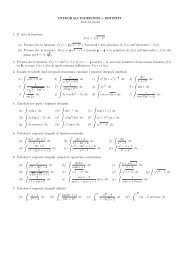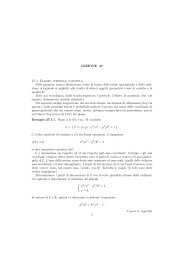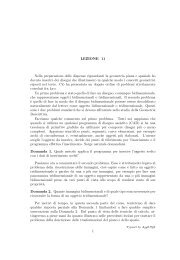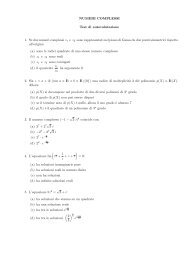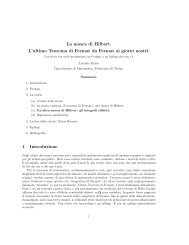FUNCTIONAL ANALYSIS LECTURE NOTES CHAPTER 3. BANACH ...
FUNCTIONAL ANALYSIS LECTURE NOTES CHAPTER 3. BANACH ...
FUNCTIONAL ANALYSIS LECTURE NOTES CHAPTER 3. BANACH ...
Create successful ePaper yourself
Turn your PDF publications into a flip-book with our unique Google optimized e-Paper software.
16 CHRISTOPHER HEIL<br />
The next theorem shows that B(X, Y ) is a Banach space whenever Y is a Banach space.<br />
Theorem 2.18. If X is a normed space and Y is a Banach space, then B(X, Y ) is a Banach<br />
space.<br />
Proof. Assume that {An}n∈N is a sequence of operators An ∈ B(X, Y ) that is Cauchy in<br />
operator norm. For any given f ∈ X, we have<br />
Amf − Anf ≤ Am − An f,<br />
so we conclude that {Anf}n∈N is a Cauchy sequence of vectors in Y . Since Y is complete,<br />
this sequence must converge, say Afn → g ∈ Y . Define Af = g. This gives us a candidate<br />
limit operator A.<br />
Exercise: Show that A defined in this way is a linear operator.<br />
To show that A is bounded, first recall that all Cauchy sequences are bounded. Hence we<br />
must have C = sup An < ∞. If f ∈ X, then since Anf → Af we have<br />
Af = lim Anf ≤ sup<br />
n→∞<br />
n∈N<br />
Anf ≤ sup An f = C f.<br />
n∈N<br />
Hence A is bounded, and A ≤ C.<br />
Finally, we must show that An → A in operator norm. Fix any ε > 0. Then there exists<br />
an N such that<br />
m, n > N =⇒ Am − An < ε<br />
2 .<br />
Choose any f ∈ X with f = 1. Then since Amf → Af, there exists an m > N such that<br />
Af − Amf < ε<br />
2 .<br />
Hence for any n > N we have<br />
Af −Anf ≤ Af −Amf+Amf −Anf ≤ Af −Amf+Am−An f < ε ε<br />
+ = ε.<br />
Taking the supremum over all unit vectors, we conclude that A − An ≤ ε for all n > N.<br />
Thus An → A. <br />
Corollary 2.19. If X is a normed space, then its dual space X ′ = B(X, F) is a Banach<br />
space.<br />
The next exercise deals with the problem of extending an operator defined only a dense<br />
subspace to the entire space.<br />
Exercise 2.20 (Extension of Bounded Operators). Let Y be a dense subspace of a normed<br />
space X, and let Z be a Banach space.<br />
(a) Suppose that L: Y → Z is a bounded linear operator. Show that there exists a<br />
unique bounded linear operator ˜ L: X → Z whose restriction to Y is L. Prove that<br />
˜ L = L.<br />
(b) Prove that if L: Y → range(L) is a topological isomorphism, then ˜ L: X → range(L)<br />
is also.<br />
2<br />
2


